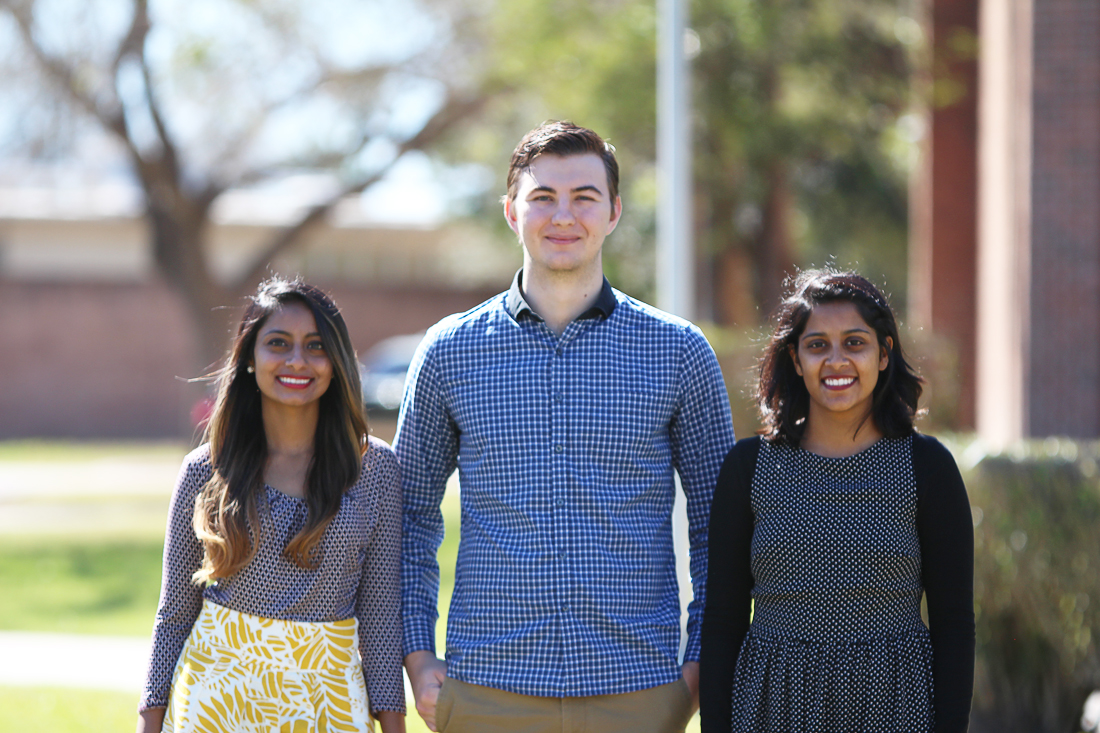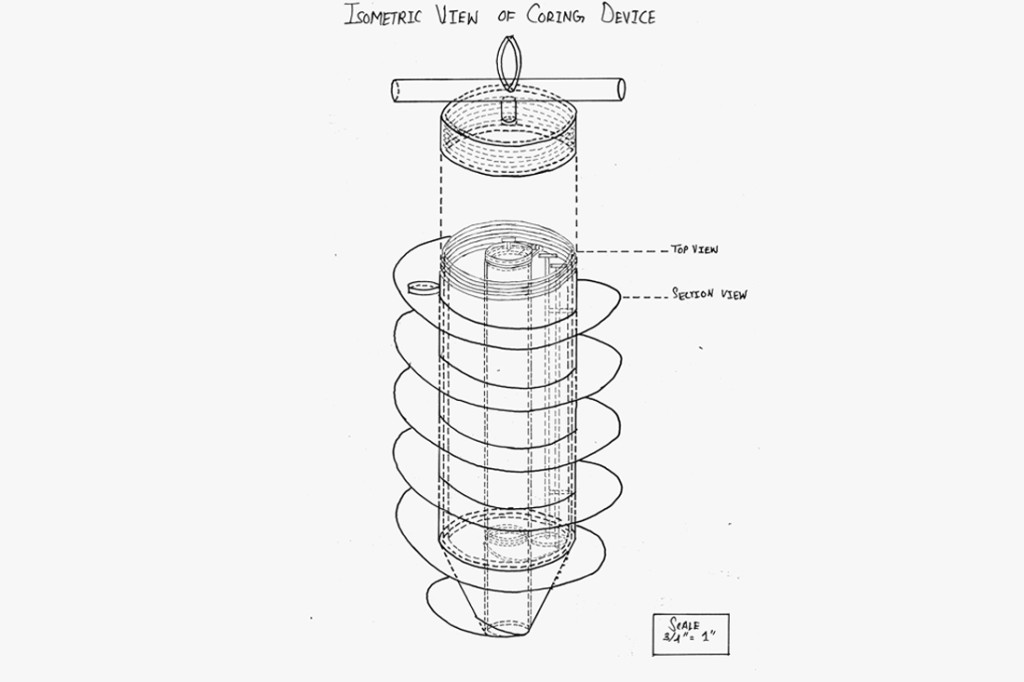
Electrical engineering senior Tooba Safeer (from left), mathematics senior Christopher Kuri and mechanical engineering junior Varda Ahmed form the UTRGV Micro-g NExT team, which has designed a prototype spacewalk tool that will be tested by NASA in May at its Neutral Buoyancy Lab. GABRIEL MATA/ THE RIDER
Three UTRGV students have made it to the final round in the NASA Micro-g Next program, a competition where science, technology, engineering and mathematics undergraduates from across the country compete to build spacewalk tools for astronauts.
Varda Ahmed teamed up with her sister Tooba Safeer and friend Christopher Kuri to create a prototype coring device that can be used to pick up samples on the surface of asteroids. The drill they designed will be able to collect the sample and preserve the layers of the asteroid without contamination to see its history.
sister Tooba Safeer and friend Christopher Kuri to create a prototype coring device that can be used to pick up samples on the surface of asteroids. The drill they designed will be able to collect the sample and preserve the layers of the asteroid without contamination to see its history.
The tools designed for Micro-g NExT address an authentic, current space exploration problems–asteroid sample collection for NASA’s Asteroid Redirect Mission, in which humans will visit a portion of an asteroid that will be brought into lunar orbit. Upon successful testing, these student-designed tools have the possibility of being used by the astronauts for future training as NASA prepares for the mission, according to a news release from the Johnson Space Center.
Ahmed, a mechanical engineering junior, explained the process to design the prototype, which will be tested in May in the NASA Neutral Buoyancy Lab at the Johnson Space Center in Houston.
“Once you have your designs and everything, you can work at a workshop or 3D-print prototype or you can actively build it with your own hands … ,” Ahmed said. “Because what we do for the project is that once you build your prototype, you go to NASA NBL (Neutral Buoyancy Lab) and test it there with actual professional divers.”
In the Micro-g NExT program, the students, who are studying science, technology, engineering and math, choose one of five challenges provided by NASA to solve. There are a total of 25 teams with three students in each across the country.
“I think most of the challenges from this year have to do with collecting or taking place on asteroids, you know, collecting rock samples, obtaining rock samples, keeping them in shape and decontaminated from other environments so that it can be brought back to their space shuttle or us, so that we can study them down here on Earth,” said Safeer, a 20-year-old electrical engineering senior. “So the design challenge we picked has to do with obtaining a layer of, basically, sediments that you might find on an asteroid.”
Mathematics senior Kuri, 20, said the program is a great opportunity for the Rio Grande Valley.
“I had anticipated it being solely an engineering design challenge,” the Brownsville native said. “It’s definitely different to any engineering project I’ve done before and I think it’s a good thing, especially in the Valley, the science interest isn’t high. So we’re given this chance and support from NASA to increase the amount of interest in science to better the community.”
Asked what was the biggest challenge the team faced, Ahmed replied it was researching and trying to figure out how to make the prototype work.
“We are working on a regolith auger,” the McAllen native said. “Basically, our challenge was that we had to be able to collect a stratigraphic column from an asteroid. So, we had to take into account microgravity and how to find the regolith.
Regolith is like the dirt that would be on an asteroid. So we, personally, as students don’t know from experience what regolith feels like, so we have to do research and look into that.”
The UTRGV Micro-g NExT team will present its prototype May 23 and test it at the Neutral Buoyancy Lab.
Nicolas Pereyra, a UTRGV associate professor in physics and the team’s adviser, gushed about the students’ participation in the program and what it could mean for the university.
“If our undergraduate students succeed and NASA adopts the prototype, then we can see the UTRGV logo on the drill in space,” Pereyra said.
For more information about the team’s Micro-g NExT project, visit http://micrognextutrgv.com/.







